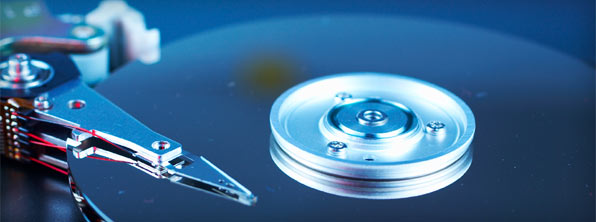
There are many reasons why you might want to erase your hard drive, such as donating it to a worthy cause or giving it to a friend. It may also be done when sending a computer in for repairs. Regardless of the reason, the point of erasing the data is to ensure that important information is removed from the drive in order to prevent someone else from recovering it. What many people do not realize however, is that erasing a hard drive is not as simple as it sounds.
Your Supposedly Erased Data Can Be Recovered
The most common method of erasing a hard drive is to simply use the operating system’s format command. This command typically frees up hard drive space very quickly so that it can be reused, and is considered highly valuable for formatting a drive with a large storage capacity. The problem with this process is that it cuts corners to get the job done. Namely, it leaves the physical data on the drive but removes pointers to it. This is not unlike removing all of a library’s index cards while leaving the actual books on the shelves. Likewise, a hard drive that has been quickly formatted still contains all of the data you are trying to erase. In most cases, data that is supposedly erased by a quick format can be recovered, in part or whole, by cheap or even free consumer-grade data recovery programs.
How to Securely Erase Your Data
The key to erasing a hard drive is to completely wipe it using a process that can take hours to complete. For hard drives with storage capacities of hundreds of gigabytes or terabytes, this process may even take several days. To totally erase your hard drive you will need to use what is called a three-step process. This involves overwriting all storage space on the hard drive with the data value “0” in the first step. That means overwriting all used and unused space, also known as the hard drive sectors, as well as the partition table and the master boot record. Then the hard drive must be overwritten again in the same fashion, using the data value “1”, in the second pass. Finally, in the third pass, it must be completely overwritten with a random data value. This method is defined by the United States Department of Defense hard drive erasure standard, known as DoD 5220.22-M.
Although erasing hard drive data can be complicated and, in some cases, time consuming, failure to do so can have devastating consequences. A hard drive that has not been securely erased can give the new owner of the hard drive access to private information, such as passwords, bank account information and credit card data. Businesses that fail to wipe their hard drives may inadvertently leak their client’s personal information, such as Social Security and credit card numbers. For these reasons it is well worth both the effort and time spent to erase a hard drive before selling a computer or sending it for repairs.
About the Author: Austin, Texas has been Peter Wendt’s writing headquarters for a number of years now. He recommends finding a secure data destruction service for readers who wish to learn more about this subject.













